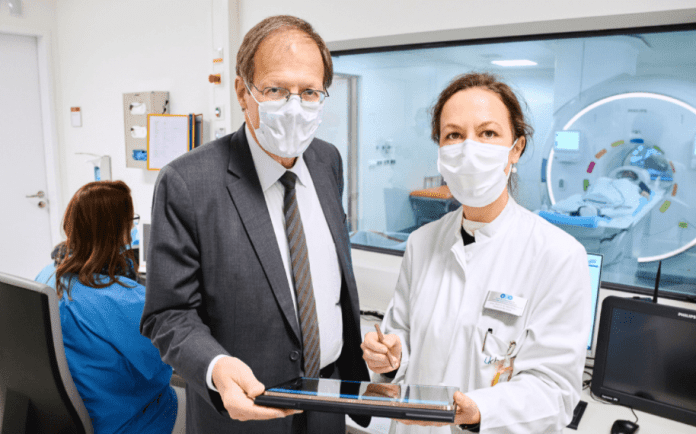Deutsche Telekom has deployed a 5G ‘campus’ network in the 3.6 GHz spectrum band for University Hospital Bonn (UKB). The setup uses the German carrier’s public cellular network, optimised with new radio installs on the university campus.
The pair said the network allows for UKB to transfer large amounts of data and “different medical specialties” wirelessly. It will be used in emergency medical procedures. The 5G campus extension in Bonn represents the first in the healthcare market in Germany. UKB is using the name ‘Secure UKB Medical Campus’ for the setup.
Deutsche Telekom called it “a pioneering achievement for the health sector in Germany”, and a “milestone” on the way to “highly-efficient” digitally-optimised healthcare provision in the country. UKB employs 8,000 staff and handles 400,000 patients per year.
The 5G facility will be used to share large volumes of data-intensive radiological files between specialist departments, and expedite collaboration and diagnosis. The radiology department is already transferring CT and MRI scans, notably.
UKB said the network will be used in future for “digital recording and therapy planning, and the virtual testing of therapeutic procedures [with] digital twins.” A press note also suggests the facility will be used, “theoretically”, for vehicles to “move autonomously across the clinic premises with the help of sensors”.
Wolfgang Holzgreve, medical director and chairman of the board at the UKB, said: “We want to completely digitize the process flows within the framework of maximum university care and thus ensure, with the help of artificial intelligence, that patient care is further optimized.”
Claudia Nemat, board member for technology and innovation at Deutsche Telekom, said: “Secure, innovative technologies that support people are very important to us. The advantages for the UKB are strong data security when transmitting sensitive patient information, fast data transmission and high reliability. This benefits patient care, research and teaching in equal measure.”

